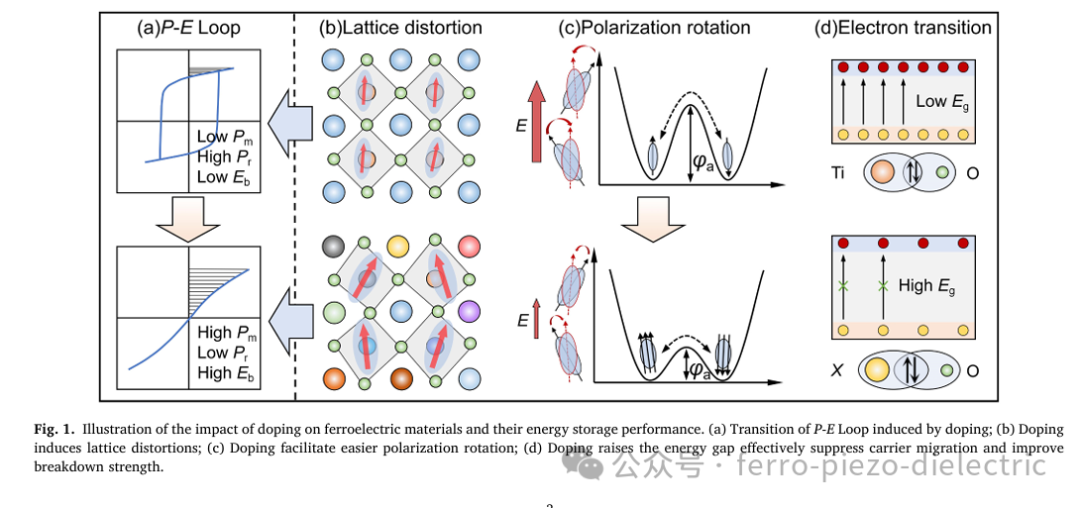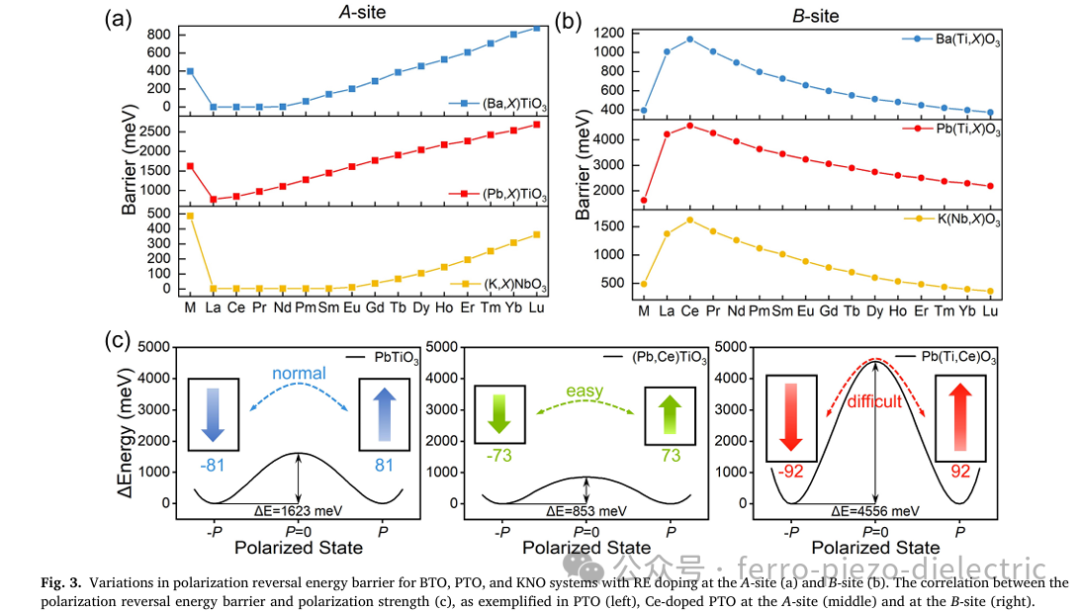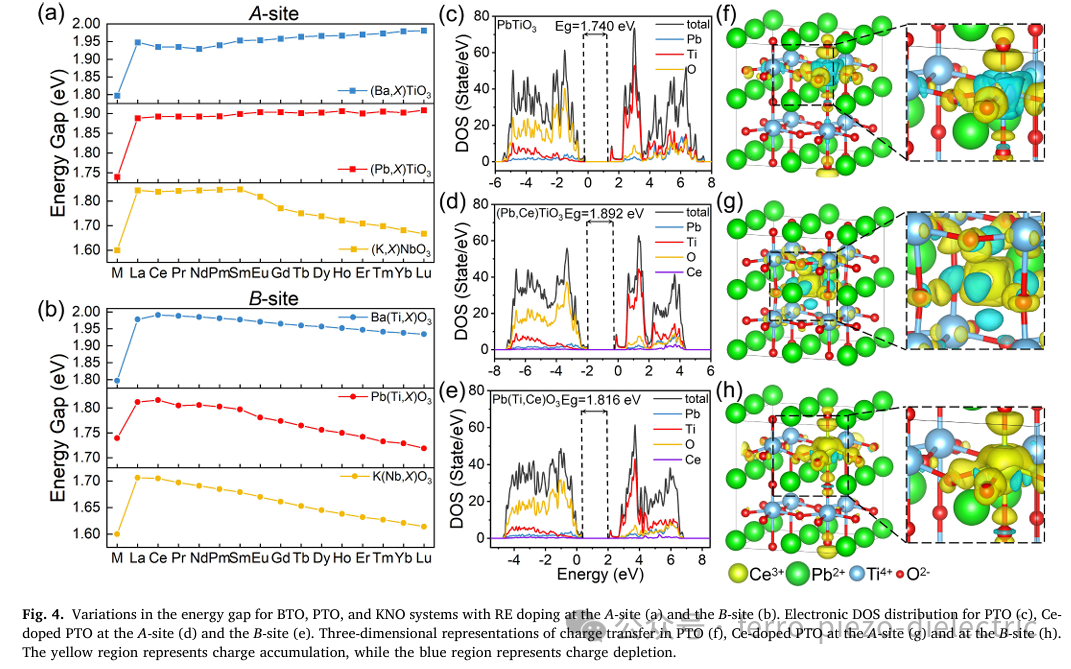|
Title |
J Eur Ceram Soc:Study on the Mechanism of Capacitance Energy Regulation in Rare Earth Doped BaTiO₃/PbTiO₃/KNbO₃ Ferroelectrics |
|
Research Background |
Perovskite ferroelectrics are considered ideal energy storage materials due to their high dielectric constant, but their strong coupling ferroelectric domains lead to low breakdown strength and high losses. Experiments have shown that rare earth doping can significantly regulate energy storage performance, but the microscopic mechanisms remain unclear. This paper systematically studies the effects of doping 15 rare earth elements at A/B sites in ABO₃ (BaTiO₃/PbTiO₃/KNbO₃) on lattice distortion, polarization strength, reversal energy barrier, and energy gap through DFT calculations, elucidating the atomic-level action mechanisms of rare earth doping. |
|
Research Content |
① As the ionic radius of rare earth ions doped at the A site decreases, the c/a ratio and polarization strength increase (the polarization of Lu doped BaTiO₃ reaches 41.69μC/cm²), while the B site shows the opposite trend. ② The polarization reversal energy barrier is positively correlated with polarization strength; the barrier for A site doping of Lu in PbTiO₃ reaches 2685meV, while for B site doping of Ce it is as high as 4556meV.
③ Rare earth doping regulates the energy gap through spatial effects (cell volume) and electronic effects (orbital hybridization), with A site doping generally increasing the energy gap by 0.1-0.3eV.
|
|
Innovations |
① A systematic model establishing the quantitative relationship between rare earth doping sites, ionic radius, and ferroelectric performance is proposed for the first time. ② Reveals the atomic-scale positive correlation mechanism between polarization strength and reversal energy barrier. ③ Proposes a dual-factor mechanism for energy gap regulation (spatial compression + orbital hybridization).
|
|
Paper Summary |
Through DFT calculations, it is found that A site doping with small radius rare earth (such as Lu) can increase the polarization strength of BaTiO₃ by 28% (41.69 vs 32.55μC/cm²) and increase the energy gap by 10% (1.98 vs 1.80eV); B site doping with large radius rare earth (such as Ce) increases the polarization strength of PbTiO₃ by 15% (93.85 vs 81.45μC/cm²). A principle for selecting doping sites is established: A site should choose small radius rare earth to enhance polarization and breakdown, while B site should choose large radius rare earth to optimize energy storage efficiency.
|
|
Original Text |
https://doi.org/10.1016/j.jeurceramsoc.2025.117539 |
Disclaimer: This article summarizes information based on publicly available data from relevant academic journals and is not original. It is intended for academic exchange only and does not represent the views of this public account.



